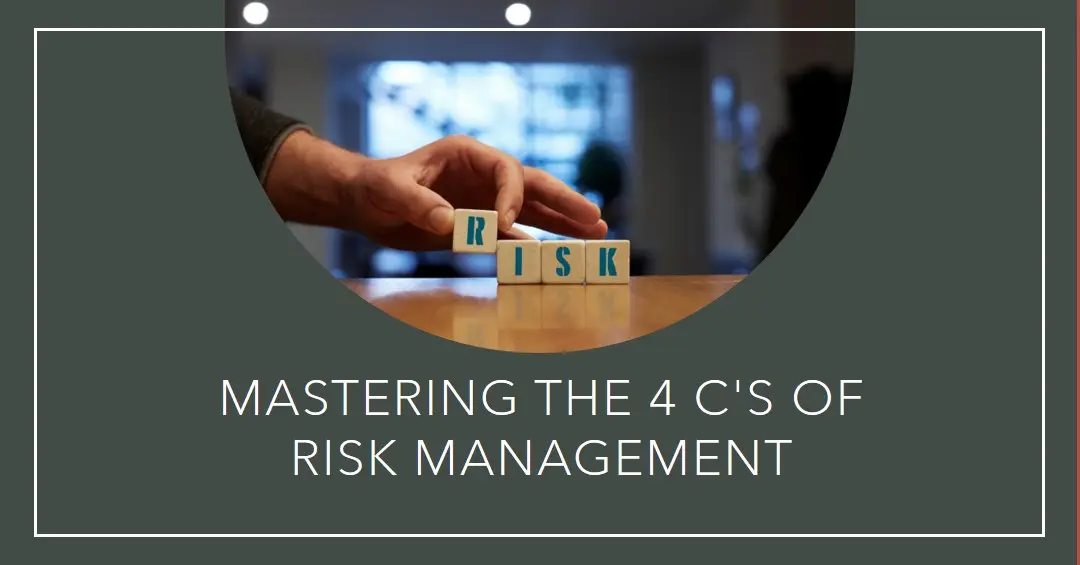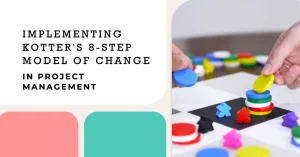I. Introduction
Picture this: You’ve been assigned to manage a high-stakes project, and it feels like the weight of the world is on your shoulders. You know that with great power comes great responsibility, and you’re determined to lead your team to success. But, as any seasoned project manager will tell you, the path to success is often riddled with risks and uncertainties. That’s where effective risk management comes in!
In today’s fast-paced and ever-changing business landscape, the ability to identify, assess, and manage risks is crucial to ensuring the success of your projects. But how can you develop a comprehensive approach to risk management that covers all your bases? Enter the 4 C’s of Risk Management: a powerful framework designed to help you navigate the treacherous waters of project risks and steer your team towards success.
In this blog post, we’ll explore the 4 C’s of Risk Management – Communication, Collaboration, Control, and Continuous Improvement – and learn how you can apply this framework to your own projects. So buckle up, and let’s dive into the fascinating world of risk management!
II. The 4 C’s of Risk Management: A Comprehensive Framework
Before we delve into the 4 C’s, I want you to think back to a time when you were part of a project that faced challenges. What helped you overcome those obstacles? I’m willing to bet that the following four components played a crucial role in your success story.
A. Communication
- The importance of communication in risk management
Think about the last time you played a game of “telephone.” You know, that old childhood game where you whisper a message to the person next to you, and it gets passed along until the last person reveals what they heard, often with hilarious results. In projects, just like in that game, miscommunication can lead to unexpected and potentially disastrous outcomes.
Effective communication is the foundation of successful risk management. It’s essential to have an open line of communication with your team, stakeholders, and clients to ensure that everyone is on the same page and aware of potential risks.
- Strategies for effective communication in managing risks
To enhance communication in your risk management process, consider implementing these strategies:
- Regular meetings: Schedule periodic meetings to discuss risks and share updates.
- Clear documentation: Maintain a centralized and accessible location for risk-related documents and information.
- Open culture: Foster an environment where team members feel comfortable voicing concerns and discussing risks.
B. Collaboration
- The role of teamwork in risk management
No one is an island, especially when it comes to managing risks in projects. A collaborative approach, where team members work together to identify, assess, and address risks, can lead to more effective risk management and better project outcomes.
- Techniques for fostering collaboration in addressing risks
Here are some ways to promote collaboration in your risk management process:
- Cross-functional teams: Encourage team members from different departments or areas of expertise to work together on risk-related tasks.
- Brainstorming sessions: Organize sessions for team members to collectively identify and assess potential risks.
- Shared responsibility: Assign risk management tasks to multiple team members, ensuring a collaborative effort in addressing risks.
C. Control
- Establishing control mechanisms for risk management
Control is all about keeping a close eye on your project’s risks and ensuring that they are addressed in a timely and effective manner. By establishing control mechanisms, you can monitor and track risks, ensuring that they don’t spiral out of hand.
- Monitoring and controlling risks throughout the project
Some control mechanisms to consider include:
- Risk registers: Maintain a log of identified risks, their potential impact, and mitigation strategies.
- Performance metrics: Track key performance indicators (KPIs) related to risk management, such as the number of risks addressed or the effectiveness of mitigation strategies.
- Regular reviews: Schedule periodic risk management reviews to assess the status of risks and determine if any adjustments are needed.
D. Continuous Improvement
- The importance of learning from past experiences and adapting
In the ever-evolving world of projects, it’s essential to learn from our past experiences and adapt our risk management strategies accordingly. By embracing continuous improvement, we can refine our approach, ensuring that we’re better equipped to manage risks in future projects.
- Techniques for promoting continuous improvement in risk management
Some methods to foster continuous improvement in your risk management process include:
- Lessons learned: Conduct post-project reviews to identify what worked well and what could be improved in your risk management approach.
- Training and development: Encourage team members to participate in risk management training, workshops, and professional development opportunities.
- Benchmarking: Compare your risk management performance to industry best practices and identify areas for improvement.
Now that you have a good grasp of the 4 C’s of Risk Management, it’s time to explore how you can implement these principles in your own projects. Remember, the key to success lies in effective communication, collaboration, control, and continuous improvement. By applying the 4 C’s, you’ll be well on your way to navigating project risks and ensuring the success of your endeavors.
III. Implementing the 4 C’s of Risk Management
Now that we’ve explored the 4 C’s of Risk Management, you might be wondering how to put these principles into practice in your own projects. Don’t worry, I’ve got your back! Let’s take a closer look at the steps you can follow to implement the 4 C’s and elevate your risk management game.
A. Assessing your current risk management approach
Before you can improve your risk management process, it’s important to understand where you currently stand. Take some time to assess your existing approach by asking yourself questions like:
- How effective is our communication regarding risks?
- Are we fostering a collaborative environment to address risks?
- Do we have control mechanisms in place to monitor and manage risks?
- Are we committed to continuous improvement in our risk management efforts?
By evaluating your current process, you can identify the areas that need improvement and develop a plan to integrate the 4 C’s into your risk management strategy.
B. Integrating the 4 C’s into your risk management process
With a clear understanding of your current approach, it’s time to put the 4 C’s into action. Here are some practical tips for integrating each component into your risk management process:
- Communication
- Establish regular risk management meetings.
- Create a centralized location for risk-related documents and information.
- Foster an open culture that encourages discussions about risks.
- Collaboration
- Form cross-functional teams to tackle risk-related tasks.
- Hold brainstorming sessions to identify and assess potential risks.
- Assign risk management responsibilities to multiple team members.
- Control
- Develop and maintain a risk register.
- Monitor risk-related KPIs.
- Schedule regular risk management reviews.
- Continuous Improvement
- Conduct post-project reviews to identify lessons learned.
- Encourage team members to participate in risk management training and development opportunities.
- Benchmark your risk management performance against industry best practices.
C. Measuring the success of your risk management efforts
As with any process, it’s essential to measure the success of your risk management efforts to ensure that you’re on the right track. By tracking metrics such as the number of risks identified, the effectiveness of mitigation strategies, and the time taken to address risks, you can gain insights into the performance of your risk management process and make data-driven decisions for improvement.
In conclusion, implementing the 4 C’s of Risk Management in your projects is a powerful way to navigate project risks and ensure success. By focusing on communication, collaboration, control, and continuous improvement, you’ll be well-equipped to face the challenges that come your way and lead your team to victory. So go forth, embrace the 4 C’s, and make your projects shine!
IV. Conclusion
As we wrap up our deep dive into the 4 C’s of Risk Management, I hope you’re feeling inspired and empowered to tackle project risks head-on. Let’s quickly recap the key takeaways from our journey together:
- Communication: The cornerstone of effective risk management, fostering open and transparent communication will ensure that everyone stays informed about potential risks and can contribute to finding solutions.
- Collaboration: Teamwork makes the dream work, and that’s especially true in risk management. By working together, your team can better identify, assess, and address the risks that may arise throughout the project.
- Control: Keep a close eye on your project’s risks by establishing control mechanisms, such as risk registers, performance metrics, and regular reviews, to ensure that they’re managed effectively.
- Continuous Improvement: Embrace a growth mindset and continually refine your risk management approach by learning from past experiences, investing in training and development, and benchmarking against industry best practices.
Now, it’s time to take these principles and apply them to your own projects. You’ve got the tools, the knowledge, and the passion to navigate the uncertainties that come with any project. Remember, the 4 C’s of Risk Management are your compass, guiding you towards success.
Find out more about Shaun Stoltz https://www.shaunstoltz.com/about/ This post was written by an AI and reviewed/edited by a human.



